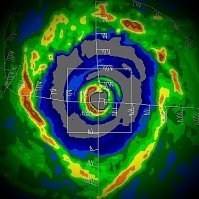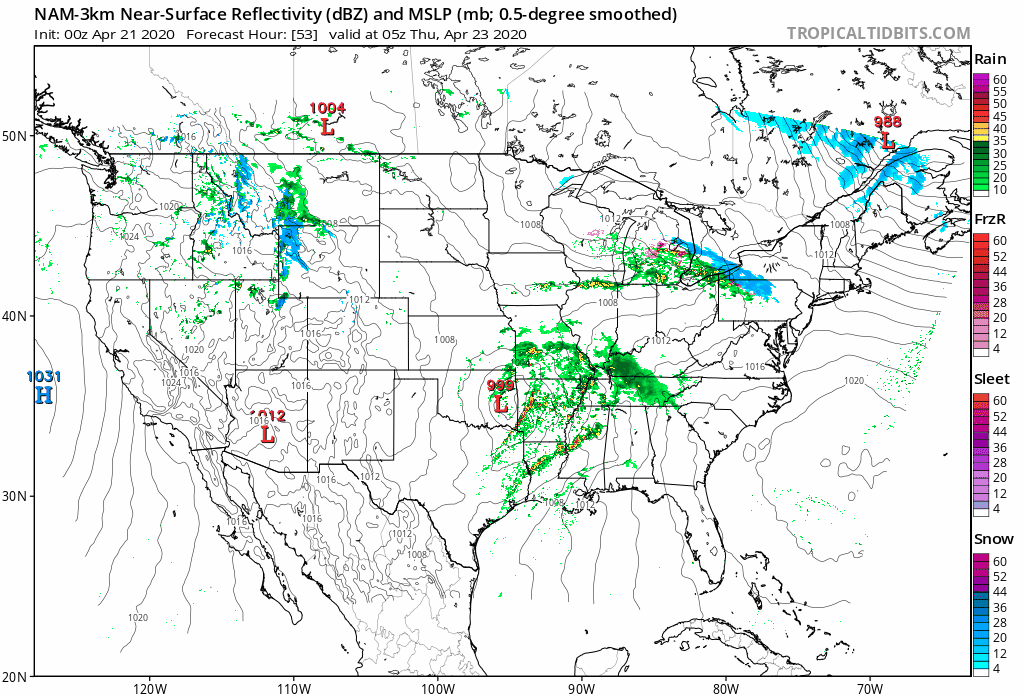-
Posts
4,715 -
Joined
-
Last visited
Content Type
Profiles
Blogs
Forums
American Weather
Media Demo
Store
Gallery
Everything posted by Windspeed
-
Might the African wavetrain get an early start this year?
-
SSTs along the NW GOM are still relatively minimal 26-27°C to support an intense TC. However, if Amanda or newly named system's location is timed just right, a more favorable divergent upper pattern could be in place as it approaches landfall. Also SSTs may warm to 28°C by next weekend if cloud coverage/storminess clears out for the most part. We'll have to wait a few more days to see how the forecast ahead of any potential TC will be influenced by the synoptic and oceanic environment.
-
053112z ECMWF ensemble...
-
I hate to April 27th a meteorological topic for hyperbole, but many of the characteristics of 2005 are coming into play with the late pattern swings here. That year saw a strong -NAO flip postive with a favorable AMO and ENSO for a hyperactive Atlantic. There are other variables, of course, not excluding WAM (West African Monsoon) and ITCZ suppression/placement along the surface wave-breaking entrance into the MDR and SAL. But with a +AMO and +NAO, a late shift like we saw in June that year gave us some incredible early fireworks out of the MDR as well. This year is going to be incredibly interesting to watch unfold.
-
That is NOAA though. Though SSTs may lag on rapid warmth due to the late swings in pattern, negative to positive NAO and positive AMO, -ENSO, etc., June looks amplified for strong favorable environmental gains to support an active TC setup in the western ATL basin by July. Might even see some W Caribbean / Gulf development into early June. Looks like an active to hyperactive season.
-
Amphan is likely a Cat 5 Saffir-Simpson right now. But it has a very tiny core. Outer banding is also clearly intensifying and consolidating a circular structure on MW. An ERC within 24 hrs will be underway. The real question is what happens after that ERC for the low-delta and coastal plain. Will a larger eyewall begin intensification prior to landfall or will Amphan struggle through landfall? Varying landfall intensities with a larger eyewall could be mitigatable or catastrophic event for Bangladesh. All we can so at this point is wait and see how Amphan morphs and evolves.
-
Yeah, also a +AMO. If the pattern does flip late and a +NAO roars into June and July, there's going to be some serious fireworks in the tropics w/ southerly hot & muggy flow across the greater Tennessee Valley and Southeast CONUS. Essentially successive rinse & repeat days until soil moisture begins to decline by August. A lot of variety isolated afternoon thunderstorms giving way to greater and greater spreads between days with precipitation. So still thinking Aug.-Oct. 2020 will lean dry barring a land-falling TC making its way across the region.
-
Region 3 is starting to nosedive. Looks like the precursor ENSO modeling has done really well this Spring as a La Niña does look to be developing....
-
Region 3 is starting to nosedive. Looks like the precursor ENSO modeling has done really well this Spring as a La Niña does look to be developing....
-
Developing fast...
-
That cell right over KTLX went up fast and was quickly severe warned.
-
Unfortunately, I would wait. Chances are increasing of a several significant frosts and perhaps even freeze event into next week. We really need this beast of a -NAO signal to flip positive by late-May. It will, it's just being stubborn.
- 292 replies
-
- 2
-

-
- garden
- vegetables
-
(and 4 more)
Tagged with:
-
Hazardous pay gets it done, fast. Seriously. People can tolerate the inconveniences of road construction. They cannot/will not tolerate life without electricity. Those folks that rebuild those lines are incredibly focused both mentally and physically. And they get paid for it.
-
lol...
-
In simple terms, the ground temps are cool, airmass humidity is meh and there just may not be enough sunshine to increase both parameters fast enough in the surface-to-low levels of the atmosphere to increase instability. At least the kind of instability needed to drive severe nodes up in the Valley. Inevitably the timing of advancing precip/cloud cover would kill the chance for any of that to occur later this afternoon and evening. Otherwise, you would need strong low-level southerly flow to increase air temps and dewpoints drastically, and that doesn't seem to be occurring. So we'll get showers and storms, but it should remain mostly tame.
-
With a -NAO, deep ECONUS trough and strong subtropical jet in place, anything that would/could develop in the GOM is going to be a very asymmetric heavily sheared mess. Would probably resemble a system much like a running coastal low or nor'easter. However, that could bring severe storms across Florida and the coastal Carolinas if there were to be any phase. At any rate, something to watch in the long-range.
-
I am still working out my numbers. Where most seasonal forecasts are out and dependent upon neutral versus La Nina ENSO conditions, I am waiting just to bit, perhaps early May. The three major ENSO models should have better projections as region 3 begins to decline. I'd really like to know if we're going full Nina. Additionally, I'd like to know if +NAO is going to kick in big time and much earlier in the coming late Spring / early Summer period, or if that is going to oscillate virtually neutral as well. It's more than just projections of active versus hyperactive, but higher track nodes for the W. Caribbean or CONUS versus MDR and susceptibility to recurve.
-
http://www.essc.psu.edu/essc_web/research/Hurricane2020.html
-
Hank is an intelligent chaser and is usually cautious but, yeah, he was too close there. I'd imagine his wife will tan his hide over that one. Even the best chasers are still human and prone to mistakes. Being a professional storm chaser is a life that is susceptible to risks.
-
Well then. Definitely going to want to pay close attention to how this evolves over the coming days.






